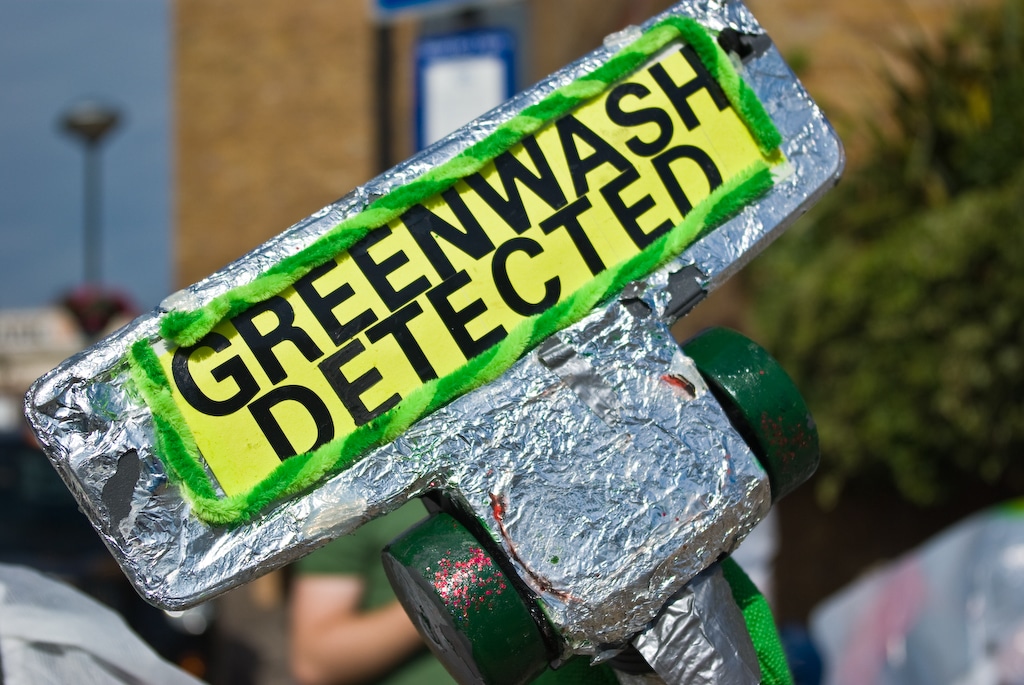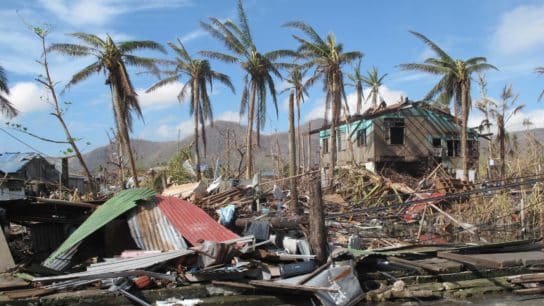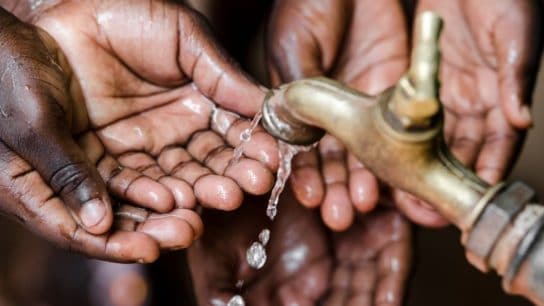A little under 3,000 climate litigation cases seeking to hold governments and corporations accountable for their actions have been filed around the world since 1986. The past decade has seen an unprecedented surge in such cases and dozens of landmark victories around the world. But what exactly is climate litigation, how powerful of an instrument is it really in the fight against climate change, and where is it heading?
—
Climate change litigation cases seeking to hold governments and corporations accountable for their actions are on the rise worldwide, as suggested in a recent Gratham Institute report.
2023, the hottest year in our planet’s history, was an important year for climate change litigation globally, with national and international courts ruling and advising on fundamental climate matters. Landmark cases brought forward by people from all walks of life have paved the way for others to come forward. They have also proven that citizen action can succeed in holding businesses and governments accountable for their actions.
In this article, Earth.Org looks at what climate litigation is and how it has evolved and grown in the past five decades. It also spotlights key cases that shook the world and shaped this emerging legal field.
What Is Climate Litigation?
Individuals of all ages, environmental groups, and affected communities have been increasingly seeking legal avenues to hold government and corporations accountable for their contribution to climate change and inaction, with rather positive results.
In the past decade, climate litigation has consolidated as a popular strategy in tackling the ongoing climate crisis – or, as the United Nations Environment Programme puts it, as “a frontier solution to change the dynamics of the fight against climate change.” It has been described as an “attempt to control, order or influence the behaviour of others in relation to climate governance,” and it has been used by governments, private actors, civil society and individuals locally, regionally, nationally, and internationally.
The Global Climate Change Litigation database is the most comprehensive database on the matter. Set up in 2011, it is regularly updated by the Sabin Center for Climate Change Law, an affiliated center of the Columbia Climate School at Columbia University.
As of September 17, 2024, the database contained 2,796 cases – 1,850 filed in the US and 946 in the rest of the world. 70% of these cases have been filed in the past decade alone (2015-2024), following the adoption of the landmark Paris Agreement. It also includes cases brought before international or regional courts or tribunals.
At present, the database features cases from over 55 countries – with the US, the UK, Brazil, and Germany leading the way. Little over 200 cases have been recorded in the Global South, with Brazil accounting for 88 of them.
The database classifies cases filed around the world – except in the US – as (1) lawsuits against governments (including those challenging environmental assessment and permitting, human rights violations and environmental crimes) and (2) lawsuits against corporations and individuals.
It also keeps track of requests for advisory opinions submitted to national and international courts. Advisory opinions are non-legally-binding advises issued by a court regarding the constitutionality or interpretation of a specific law.
Advisory Opinion – Example (click to view)
The latest climate-related opinion was issued in May by the International Tribunal for the Law of the Sea (ITLOS) upon a request of the Commission of Small Island States on Climate Change and International Law (COSIS) on behalf of nine island states.
Asked to clarify the legally binding obligations of the 169 signatories of the 1994 UN Convention on the Law of the Sea (UNCLOS), the UN court on maritime law stated that all parties to the Convention must “take all necessary measures to prevent, reduce and control marine pollution from anthropogenic [greenhouse gas] emissions.” The Commission argued that big polluters’ failure to mitigate greenhouse gas emissions was causing “catastrophic harm” to small island states and would deem them uninhabitable in the near future.
The court’s opinion was hailed a “historic” win for small island states. Despite their almost insignificant contribution to global emissions, these nations are threatened by coastal erosion, loss of vegetable gardens from saline intrusion, sea flooding, and land-based pollution. While not legally binding, the court’s clarification on how international law should be applied sets an important precedent for future rulings on the matter and was
More on the topic: Main Takeaways From the ITLOS Advisory Opinion: A Stringent Call for Due-Diligence for Climate Impacts on Oceans

Meanwhile, cases filed in the US are organized by type of claim, such as (1) federal statutory claims (such as those challenging the National Environmental policy Act and the Endangered Species Act); (2) constitutional claims; (3) state law claims; (4) common law claims; and (5) public trust claims. It also lists cases concerning the regulation, marketing, and commercialization of carbon offsets and credits; trade agreements; and climate adaptation.
Around 5% of all cases have been filed before international or regional courts, human rights tribunals and authorities, with nearly half of the total (44 cases as of September 2024) filed before the Courts of Justice of the European Union.
Recent Trends and Key Cases
The aforementioned report by the Gratham Research Institute, published earlier this year, identified a “consolidation and concentration of strategic litigation efforts” around the world. At least 230 new cases were filed globally, with countries such as Panama and Portugal seeing their first-ever climate lawsuits.
To better understand the drivers of litigation, the Institute developed a typology of the types of behaviour that cases seek to discourage or incentivise.
Of the 233 cases documented last year, 97 (nearly 42%) were classified as “integrating climate consideration cases,” i.e. “cases that seek to integrate climate considerations, standards, or principles into a given decision or sectoral policy, with the dual goal of stopping specific harmful policies and projects, and mainstreaming climate concerns in policymaking.”
‘Integrating Climate Consideration Cases’ – Example (click to view)
In May 2024, eight young Alaska residents aged 11 to 22 filed a lawsuit at the Alaska Supreme Court against their state. They alleged that a planned natural gas project would violate their constitutional rights to a clean environment.
The Alaska LNG Project is a large-scale fossil fuel project developed by state-owned corporation Alaska Gasline Development Corporation (AGDC), located on more than 200 acres near Prudhoe Bay, North America’s largest oil field on Alaska’s North Slope. The plant is expected to deliver up to 3.9 billion cubic feet of gas per day, mostly to be exported to international markets.
Despite the company claiming that the $38.7 billion, 800-mile pipeline will result in “significant” environmental benefits, the plaintiffs claim that its intended 30 years of operations “would ensure continuing and substantially elevated levels of climate pollution for decades, locking in increasing and worsening harms to [them].”
47 cases filed last year concerned “climate-washing,” meaning they challenged “inaccurate government or corporate narratives regarding contributions to the transition to a low-carbon future.” The report noted that more than 140 such cases have been filed to date worldwide, particularly in the last few years. Targets of these cases include polluting companies such as airlines, major fossil fuel companies as well as financial institutions over misleading claims to sell their financial products and services.
‘Climate-Washing Cases’ – Example (click to view)
In July 2022, Dutch environmental group FossielVrij (Fossil Free) filed a groundbreaking lawsuit against Dutch aviation company KLM, the first-ever legal claim challenging airline industry greenwashing. According to the group, KLM’s advertising campaign “Fly Responsibly” gave the impression that the airline was actively tackling climate change, while, in fact, its plans for air traffic growth would only exacerbate the crisis. The lawsuit also addressed the airline’s carbon offsetting strategy, which, the group argued, misled customers into thinking that they could offset their flight’s emissions by supporting reforestation projects or the airline’s costs of purchasing small quantities of biofuels.
In May 2024, the Amsterdam District Court ruled that the airline’s adverts was “misleading and therefore unlawful,” adding that KLM painted “an overly rosy picture of the impact of measures such as Sustainable Aviation Fuel and reforestation.”
“These measures only marginally reduce the negative environmental aspects and give the mistaken impression that flying with KLM is sustainable,” the verdict read.

Among the highest-profile and most frequently discussed cases are what the Gratham Research Institute describes as “government framework cases.” These are lawsuits “that challenge the ambition or implementation of climate targets and policies affecting the whole of a country’s economy and society.”
More than 110 such cases have been filed around the world since the Paris Agreement was passed in 2015, with 15 new filed last year. They target government’s policy responses to the climate crisis, often in relation to the Paris accord, as well as the enforcement of climate protection measures to meet environmental targets. Plaintiffs often build their case on the basis that specific climate goals or protection measures are in violation of basic human rights and increase their vulnerabilities to climate change impacts.
‘Government Framework Cases’ – Example (click to view)
In April, a ruling by the European Court of Human Rights (ECHR) made global headlines. Europe’s top human rights court sided with KlimaSeniorinnen (Senior Women for Climate Protection) – a group of more than 2,000 women aged 64 and over – in a case that saw the Swiss government accused of failing to adequately tackle the climate crisis.
The plaintiffs argued that their government’s failure to reduce greenhouse gas emissions had violated their human rights, contending that more frequent and intense heatwaves – a result of climate change – are infringing on their rights to life and health.
Based on the absence of a binding national greenhouse gas budget post 2024 and previous failure to meet emissions reduction targets, the court found a violation of the right to privacy and family life protected under Article 8 of the Convention, which it interpreted as freedom from environmental threats to one’s personal life. The Swiss state was ordered to put in place measures to address those shortcomings and cover the group’s legal costs, around €80,000 (US$87,000), within three months.
Gerry Liston, senior lawyer at the Global Legal Action Network (GLAN) – a non-profit behind a similar “government framework case” brought forward by four Portuguese children’s – called the Swiss ruling “a massive win for all generations.”
“No European government’s climate policies are aligned with anything near 1.5C, so it will be clear to those working on climate litigation in those countries that there is now a clear basis to bring a case in their national courts,” Liston said.

Another way of holding governments and corporations accountable is to challenge their “failure to adapt” to climate change, i.e. “to take climate risk into account.” 64 such cases were filed since 2015, mostly at US and Australian courts.
According to a 2023 report by the UN Environmental Programme (UNEP), adaptation cases are still limited. Indeed, besides having to provide evidence of failure to address past and current climate change impacts – a prerequisite for cases about mitigation – adaptation lawsuits must also account for projections of future impacts.
“Failure to Adapt Cases” – Example (click to view)
In November 2023, a disability rights activists and environmental campaigning group Friends of the Earth challenged the UK’s third National Adaptation Programme (known as NAP3) before the UK’s High Court of Justice. It was the first lawsuit of its kind in the UK.
The plaintiffs allege misdirection in law as the Secretary of State set vague “risk reduction goals” instead of specific objectives under section 58 of the Climate Change Act 2008, contradicting statutory language and purpose. They also contend an unlawful failure to assess or publish risks related to the Adaptation Plan and failure to consider the unequal impacts of NAP3 on protected groups, such as those defined by age, race, or disability. Finally, they contend that the Human Rights Act 1998 was breached due to unlawful interferences with the claimants’ rights under various articles of the European Convention on Human Rights. Such interferences were linked to both the misdirection and deficiencies in NAP3.
The Court is yet to decide whether the case can proceed to full trial, as per the Sabin database.

The report also identified five new cases concerning the “polluter pays” principle – the idea that the costs of polluting activities should be borne by the party who caused it, rather than the individual or community who suffer from the consequences of pollution. These cases typically seek “monetary damages from defendants based on an alleged contribution to harmful impacts of climate change.” Of the 34 such cases filed since 2015, mostly in the US, the majority remain open.
“Polluter Pays Cases” – Example (click to view)
One of the most far-reaching “polluter pays cases” in history was the Erika trial. The case, filed in 2000, revolved around the sinking of oil tanker Erika in December 1999, which caused a devastating oil spill along the French coast. The plaintiffs included the French government, local authorities, and various environmental groups, all seeking accountability for the environmental damage incurred. Central to the trial were the theme of corporate responsibility and “polluter pays,” as the case scrutinized the actions of the ship’s owner, Total, and the classification society, Bureau Veritas, in ensuring the ship’s seaworthiness.
On November 30, 2007, the Paris Criminal Court found Total guilty of pollution and ordered the company to pay substantial fines and damages. The company was fined €375,000 (US$556,100) and told to pay a share of €192 million in damages to civil parties, including the French state.
The ruling underscored the importance of holding corporations accountable for environmental harm, reinforcing the polluter pays principle in French law and setting an important precedent in environmental law.
More on the topic: Explainer: What Is the Polluter Pays Principle and How Can It Be Used in Climate Policy?
It is important to note than not all climate litigation cases are necessarily supportive of climate action. In some cases, corporations may file lawsuits to obstruct or hinder climate policies that affect their operations.
According to the Gratham Research Institute report, nearly 50 of all climate litigation cases filed in 2023 were not aligned with climate targets. These involved disputes over the incorporation of climate risk into financial decision-making and “just transition cases” challenging “the distributional impacts of climate policy or the processes by which policies were developed, normally on human rights grounds.” Strategic Litigation Against Public Participation (SLAPP) have also become a common tool to censor, intimidate, or silence critics by burdening them with costly lawsuits, often on grounds that the critiques are defamatory. Journalists, media outlets, and human rights defenders are the main targets of such lawsuits.
In May, the European Union introduced new rules to combat the use of SLAPPs, allowing those targeted by these lawsuits to request a case dismissal early as manifestly unfounded. Those who have brought the legal challenge forward also risk having to bear the costs of the proceedings as well as potential penalties.
“Non-Climate-Aligned” Litigation – Example (click to view)
In 2005, a group of Vermont auto dealerships, including DaimlerChrysler and General Motors, sued the Vermont Agency of Natural Resources (ANR) and its commissioner over a state’s adoption of a California regulation that set greenhouse gas (GHG) emissions standards for vehicles. The plaintiffs argued, among other things, that these regulations imposed unfair restrictions on their business operations and limited consumer choice, ultimately harming their sales and profitability. During the trial, they argued that while the new rules would not stop global warming, they would impose significant new costs on the industry.
Two years later, the Supreme Court of Vermont ruled in favour of the state, rejecting automakers’ claims that federal law pre-empts state rules and that technology cannot be developed to meet them.
“There is no question that the GHG regulations present great challenges to automakers,” Judge William Sessions III said. But, he added: “History suggests that the ingenuity of the industry, once put in gear, responds admirably to most technological challenges. In light of the public statements of industry representatives, (the) history of compliance with previous technological challenges, and the state of the record, the court remains unconvinced automakers cannot meet the challenges of Vermont and California’s GHG regulations.”
The decision was hailed as a “major victory for states’ efforts to combat global warming.”
Plaintiffs and Defendants
A look at recent climate litigation cases uncovers a growing effort by civil society actors to use the courts to raise awareness about climate action and hold powerful polluters accountable. Individuals and NGOs are beyond most climate cases and about 70% of all cases filed in 2023.
Young people have also increasingly been at the forefront of climate litigation. Many of them have scored historic victories, strengthening youth climate movements worldwide and inspiring fellow activists to follow suit.
Overall, young people often demonstrate a more profound understanding of climate change compared to adults and older generations. According to a InterClimate Network survey published in 2021, more than 8 in 10 young people are concerned about climate change and think it is already having a negative effect on people’s lives. Three-quarters of those surveyed also said they believe the climate crisis will affect their life in the future.
Meanwhile, a 2021 Lancet survey of 10,000 people aged 16-25 across ten countries revealed that more than 50% experienced emotions related to climate anxiety. The study identified dissatisfaction with government responses to the climate crisis as a factor driving anxiety and feelings of betrayal among young people.
For many, these feelings have translated into action campaigns, whether it is through peaceful protests and public disruption campaigns or through the courts. Global climate movements such as Greta Thunberg’s Fridays for Future have brought the topic into the mainstream in recent years, allowing a new generation of young climate leaders – often nicknamed “the climate generation” – to push for change and educate the rest of the world about climate change.
“The climate crisis won’t be solved by any one country doing particularly well, but it won’t be solved if even one country doesn’t get on board,” Hyunjung Yoon, a young South Korean activist, told Earth.Org in September. “Young climate activists around the world are building their own movements in different environments, but I believe we are in this together.”
Yoon is one of 19 young plaintiffs who recently scored a landmark win at South Korea’s Constitutional Court, which ruled that the country’s climate targets are unconstitutional.
Recent cases brought forward by young individuals and activists (click to view)
- In March 2020, 19 young South Korean activists from the youth environmental organization Youth 4 Climate Action filed a lawsuit against their government over its “unambitious” climate targets. The plaintiffs were aged between 14 and 19 at the time of the filing. The young activists scored a historic victory last month, when the Constitutional Court of Korea ruled the country’s measures to fight climate change insufficient for protecting the rights of its citizens, particularly those of younger generations. The ruling marked the first of its kind in Asia, and experts say it sets an important precedent for the region, where similar cases are underway.
- In March 2020, sixteen young people aged 5 to 22 filed a lawsuit in Montana state court against the State of Montana, its governor, and state agencies, asserting violations of state constitutional rights. The plaintiffs argued that by expanding fossil fuels, the state had failed to uphold its constitutional responsibility to “maintain and improve a clean and healthful environment … for present and future generations.” In August 2023, a Montana judge ruled in favour of the young plaintiffs. The case was the first US youth climate trial to ever take place.
- In September 2023, six young Portuguese climate activists aged 11-24 took all EU member states along with five other governments to the European Court of Human Rights (ECHR) in the largest climate case in the Strasbourg Court’s history. The countries were accused of neglecting climate change and failing to cut planet-warming greenhouse gas emissions as required by the Paris Agreement. The case was dismissed in April on the grounds that the plaintiffs had not had their case tried at the national level.
More on the topic: How the Landmark Montana Climate Trial Paved The Way For Young Climate Activists

Governments, companies, and trade associations also file climate cases. The report suggests that “many but by no means all” cases filed by the latter two are not aligned with climate action. These three actors are also the main defendants in climate litigation, with governments historically targeted by the majority of cases. In 2023, over 70% of all cases involved government actors among the defendants compared to 26% involving companies, according to the report.
As some of the aforementioned cases show, companies across different sectors are increasingly the target of climate lawsuits, notably since the enactment of the Paris Agreement. Targeted industries include fossil fuels, airlines, food and beverage, e-commerce, and financial services. Of all cases filed last year, the majority involved companies dealing with fossil fuel exploration, production, and transportation, closely followed by transport, freight and storage companies and business services. Retail, agriculture, and fashion companies were also targeted, albeit in smaller numbers.
Big Oil Climate Lawsuit – Example (click to view)
In February 2023, ClientEarth filed a legal claim in the UK against 11 Shell directors, accusing them of endangering the company’s future by failing to prepare for the “material and foreseeable” climate change risk. The non-profit environmental law charity alleged that Shell’s Board’s flawed climate strategy is inconsistent with the Paris Agreement and jeopardises the company’s future commercial success.
In 2021, a Dutch court ordered Shell to cut its emissions by 45% by 2030 compared with 2019 levels. Since then, however, the board has “doubled down on fossil fuels,” ClientEarth said, dropping its plan to reduce oil production by between 1-2% each year until 2030.
In May 2023, the High Court dismissed ClientEarth’s application on the basis of insufficient proof.
Impact
Courtrooms around the world have become a key battleground in the public debate over climate change, and recent verdicts have sent an unequivocal message to the world – that climate action is a legal duty.
In 2022, the Intergovernmental Panel on Climate Change (IPCC) – the most authoritative scientific body on climate change – recognized that climate litigation “has influenced the outcome and ambition of climate governance,” adding that its impact is “promising.”
Recent research has demonstrated that the impact of climate litigation extends beyond the parties involved and also affects public opinion and future litigation. Considerable media attention that environmental litigation generates can also influence how climate policy is perceived.
As some lawyers put it: “Whilst environmental related litigation is both complex and costly, it is not just the outcome that is important. The activism and attention that environmental litigation generates can be just as (if not more) significant as a court judgment for ‘win’ or ‘lose’.”
In recent years, there has been a notable surge in the prevalence of climate change litigation with strategic intent. These cases are strategically designed to push for more ambitious climate-related objectives. They seek to impact policies, uphold standards, question the allocation of public resources, and scrutinize the reliability and precision of disclosures related to climate matters. Through these legal actions, stakeholders aim to drive systemic change, compel governments and institutions to uphold higher environmental standards, and ensure transparency and accountability in climate-related decision-making processes.
Climate litigation has successfully challenged governments’ climate targets and agendas as well as their authorization of high-emitting projects, setting important precedents for climate action and emissions reduction. The landmark “Urgenda” case in 2019, which saw the Netherlands’ top court ordering the Dutch government to cut greenhouse gas emissions by 25% by the end of 2020 compared with 1990 levels, made global headlines and has had ripple effects around the world.
The “Urgenda” case (click to view)
The Urgenda case, formally known as the State of the Netherlands v. Urgenda Foundation, was a groundbreaking legal battle in Dutch courts that took place between the Dutch government and the environmental group Urgenda Foundation. The plaintiffs, led by Urgenda, argued that the Dutch government had a legal obligation to take more ambitious action to combat climate change based on its duty to protect the rights to life and a healthy environment. They demanded that the government reduce greenhouse gas emissions to ensure a safer climate for current and future generations.
In 2015, the District Court of The Hague ruled in favor of Urgenda, stating that the Dutch government had a duty of care to significantly cut greenhouse gas emissions by 2020. The court ordered the government to reduce emissions by at least 25% compared to 1990 levels. The verdict was a landmark decision in climate litigation, emphasizing the legal responsibility of governments to address climate change. The Dutch government initially appealed the decision but later dropped its appeal, accepting the court’s ruling. The Urgenda case, the first of its kind, has had a profound impact globally, inspiring similar climate lawsuits around the world and highlighting the role of the judiciary in holding governments accountable for their environmental commitments.
Polluting companies are also increasingly being held accountable for their actions and ordered to compensate for the damage they cause. These cases also carry serious reputational and supply chain risks.
No matter the outcome, climate litigation plays a crucial role in shaping the discourse around climate change, holding key actors accountable, and advancing the global agenda for sustainable and responsible environmental practices.
This story is funded by readers like you
Our non-profit newsroom provides climate coverage free of charge and advertising. Your one-off or monthly donations play a crucial role in supporting our operations, expanding our reach, and maintaining our editorial independence.
About EO | Mission Statement | Impact & Reach | Write for us














